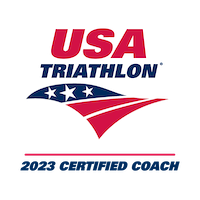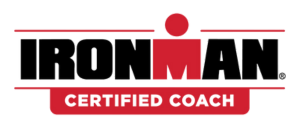Being into triathlon for several years, I was really looking forward to my first cross triathlon race. I was really surprised by the differences between a cross and a road triathlon.
A cross triathlon (also called off-road triathlon) consists of an open water swim, an MTB course and ends with a cross-country run. The swim course is either in a lake, river or ocean. The bike and running courses of cross triathlons are off-road and generally hillier and more technical than standard road triathlons.
Those distinctions make a big difference in terms of race distances and the equipment needed. Let’s check those in more detail.
WHAT ARE THE DISTANCES OF CROSS TRIATHLONS?
The Sprint distance and Standard distance are the two main formats of cross triathlon races. The exact lengths of those vary from one race organizer to another, but as a general indication, here is a common breakdown per sport:
- Sprint distance: 0.3 mi swim, 6.8 mi bike, and 2.5 mi run (0,5km-11km-4km)
- Standard distance: 0.6 mi swim, 13.7 mi bike, and 5 mi run (1km-22km-8km)
Even though the race distance is important, you should give much more attention to the profile of the bike and run courses. The terrain, the elevation, and the course’s technical difficulty can make two races of the same distances a completely different experience.
To give you a sense of what a cross triathlon is, have a look at the Youtube video below from the XTERRA race in Maui (which is the Xterra World Championship). It will give you a pretty good idea of what you can expect 🙂
WHAT GEARS DO I NEED FOR CROSS TRIATHLON?
CROSS TRIATHLON SPECIFIC
Mountain Bike:
You could use a mountain bike for a road triathlon. It is, however, not working the other way around.
The ITU (link to their 2020 rules) specifically states that:
- Traditional road handlebars are forbidden.
- The minimum tire diameter is 26 inches, and the maximum is 29 inches. The minimum cross-section is 1.5 inches.
If it is your first triathlon, you will probably be fine with any kind of mountain bike you have. If you are more into the sport, you will want to look at cross country hardtail or full suspension bikes.
I am personally using flat pedals as I am not (yet) confident enough to ride with clipless pedals in the technical sections.
Bike Helmet:
It is simply mandatory in all triathlon races. I would highly recommend investing in a specific MTB helmet and not use your aero road bike helmet.
Trail Running Shoes:
Depending on the race, they may be mandatory. I was personally surprised by the difference trail shoes make over standard running shoes. The grip is simply much better.
STANDARD FOR BOTH ROAD AND CROSS TRIATHLONS
Tri-suit:
It is the only gear you will use from the start to the finish line of your races. Apart from looking more like a triathlete, a tri suit will make your life easier during the entire transitions. You won’t need to worry about changing clothes. For your first triathlon, look at the budget tri suits (available in one piece or two pieces). They cost between $50 to $100. If you want to have more information about tri suits, check this article.
Swim goggles:
Even though they are not mandatory according to the official triathlon rules, I can’t really imagine swimming freestyle without them. If you are wearing prescription glasses, you will be happy to read that prescription swim goggles also exist! I wrote an entire article about them.
Swimcap:
It is generally provided by the race organizer and mandatory in most races. If you want to use your own, you will need to wear the official one on top of it.
Wetsuit:
Depending on the race location and the weather, a wetsuit might be compulsory. My wife and I personally rented one for our first races.
Bike repair kit:
Some parts of your repair kit will be common to both road and MTB bikes. Make sure to have the right inner tube size and have plugs if you use tubeless tires. I was really happy that my first puncture with my MTB tubeless tire happened in training and not in a race 🙂
For those who are wondering how to fix a flat tubeless tire, here is a helpful Youtube video from GMBN:
Race number belt:
Depending on the models, it will cost you between $10 to $30.
Sunscreen, sunglass, hat (or visor):
Obviously only for sunny days. If you forget those, you might regret it after being a couple of hours under the sun. Also, make sure you apply the sunscreen once you have your race tri-suit on and not only a t-shirt (speaking from experience… 🙂 )
Towel:
For the transition area
Nutrition & water bottle:
Take some nutrition and a bottle of water with you. Don’t overdo it if you are doing a short distance triathlon.
Post-race clothes:
Apart from sweat, you might be completely wet or muddy. Make sure you have some warm clothes waiting for you after the race.
HOW SHOULD I TRAIN FOR CROSS TRIATHLON?
Compared to standard road triathlons, the physical demands of cross triathlons are quite different. The bike and run portions are a succession of high-intensity efforts followed by much lower ones.
There is unfortunately not much specific information on Cross triathlon training.
One good resource I found is the interview of Melanie Mc Quaid (Xterra World Champion and triathlon coach) on The Triathlon show Podcast. Here are my key takeaways:
BIKING:
- Practice over-gearing
- Practice climbing and descending at a race pace.
- Practice bike handling, especially if you were training indoor during the winter season.
- Be aware that some races might have really difficult sections – knowing at what point you need to get off your bike and walk a few meters is key 🙂
- Coming closer to race day, avoid doing too much middle range intensity, which is neither high enough nor low enough to benefit the race’s demands. Instead, use a polarized training workout: go really hard and ride long in zone 2.
-> training session 1: 2 sets of 20s uphill really hard, 40 seconds cruising (still uphill), and then ride 4 hours.
-> training session 2: 5-8 min off-road climb straight into a descent and repeat for 45 min.
RUNNING:
- Have strong feet and ankles because you are constantly landing on uneven terrain and moving quickly laterally.
- Fast ground contact time is extremely important, especially when running downhill.
WHERE CAN I FIND CROSS TRIATHLON RACES?
Depending on where you live, your triathlon federation might have a good calendar.
From a brand perspective, the XTERRA series (link to their website) is the most well-known. They have around 50 events with a yearly World Championship final in Maui, Hawaii.
Now, it is probably time to register for your first cross-triathlon race and get the training going!
Be ready to get muddy and have fun!


